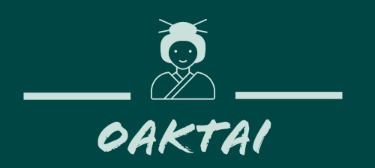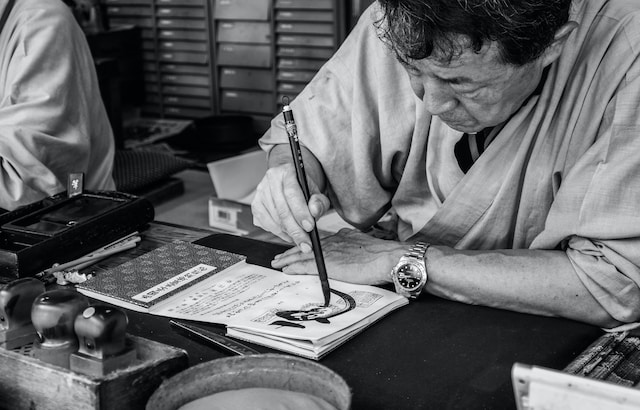
Japanese calligraphy or shodo is a form of Japanese art that has been deeply embedded in Japanese culture for centuries. This artistic tradition involves the creation of exquisite, handwritten characters that are often used in formal documents, poetry, and even paintings.
From a young age, Japanese children learn to appreciate the beauty of calligraphy and are taught the precise strokes and techniques required to create these stunning works of art. The beauty of calligraphy lies not only in the visual aesthetics of the characters themselves but also in the intricacy and detail of the brushwork that goes into their creation.
In Japan, shodo is also considered a form of self-expression and can be used as a tool for meditation and introspection. Many Zen masters, for example, practice calligraphy as a way of focusing the mind and cultivating a state of inner peace.
The materials used in calligraphy are also of great importance: high-quality paper and brushes are necessary to create the fine lines and subtle variations in width that are characteristic of this art form. Japanese calligraphy masters often maintain a lifelong relationship with their brushes, nurturing and caring for them to ensure they remain in top condition.
Understanding the basics of Japanese calligraphy
To begin learning Japanese calligraphy, one must first understand the importance of the writing materials and the basic strokes used in this art form.
Writing materials
The writing materials required for Japanese calligraphy include brushes, ink, and paper. Traditionally, brushes were made from animal hair, such as horse hair or goat hair, and come in several sizes and shapes.
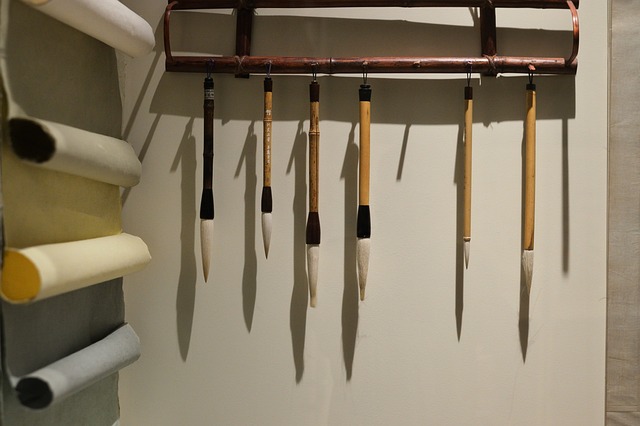
The ink used in Japanese calligraphy is usually made from soot, often mixed with glue to create a smooth texture. High-quality Japanese calligraphy paper is thin and smooth, allowing for the smooth flow of the ink and brush.
Basic strokes
To properly begin Japanese calligraphy, you must first understand the basic strokes. The strokes are the basic building blocks of all Japanese calligraphy characters. There are several types of strokes used in shodo. For example, horizontal strokes are created by pulling the brush towards the body in a horizontal direction. Vertical strokes are made by pushing the brush downwards towards the paper while maintaining a straight angle. Diagonal strokes are made by pushing the brush in a diagonal direction while creating an angle. These basic strokes are the foundation of all Japanese calligraphy characters and must be mastered before moving on to more complex forms.
Proper hand position and posture
Proper posture and hand position are also essential in Japanese calligraphy. One must sit upright with their feet firmly planted on the ground, back straight, and shoulders relaxed. The hand holding the brush must be supported by the other hand, and it should remain relaxed while holding the brush. The brush should be held at a perpendicular angle to the paper and should move smoothly and effortlessly across the surface to create the strokes.
Styles of Japanese Calligraphy
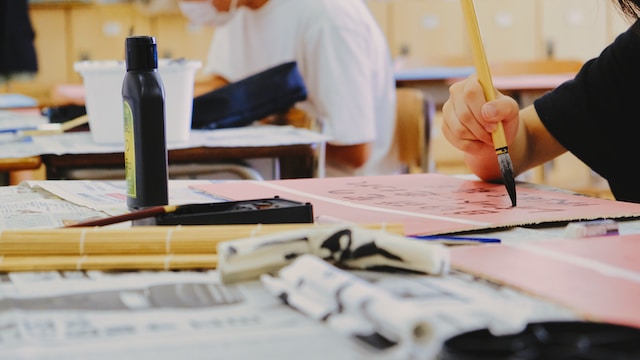
Kaisho (Block Script)
This style of calligraphy is the most straightforward and basic form of Japanese writing. Kaisho is characterized by its sharp, angular lines and uniformity in letter size and spacing. It is often used in formal documents and is considered the foundation of all other calligraphic styles.
Gyosho (Semi-cursive Script)
Gyosho is a more fluid and casual form of calligraphy that blends block script with cursive elements. It is usually written more quickly than Kaisho and is often used for personal writing, such as letters and journals.
Sosho (Cursive Script)
Sosho is a highly stylized form of calligraphy that is difficult to read for those who are not trained in this art form. It is characterized by sweeping, curvilinear brushstrokes and is often used for artistic and decorative purposes.
Hikai (Brush Style)
Hikai is a calligraphy style that emphasizes the expressive nature of the brushstroke. This style is often associated with Zen Buddhism and is used to convey a sense of simplicity, humility, and depth.
Tensho (Seal Script)
Tensho is a calligraphic style that originated in China and was introduced to Japan during the Nara period (710-784). It is characterized by its intricate and complex characters, which are often small and difficult to read. Tensho is usually used for seals and stamps, and its intricate character designs make it a popular choice for decorative purposes.
Differences between each style and their characteristics
Each style of Japanese calligraphy has its unique characteristics and aesthetic appeal. Kaisho is typically straightforward and simple, while Gyosho is more flowing and dynamic.
Sosho is highly stylized and expressive, and Hikai emphasizes the beauty and subtlety of brushwork. Tensho, on the other hand, is known for its complexity and intricacy, making it a challenging and rewarding style to master.
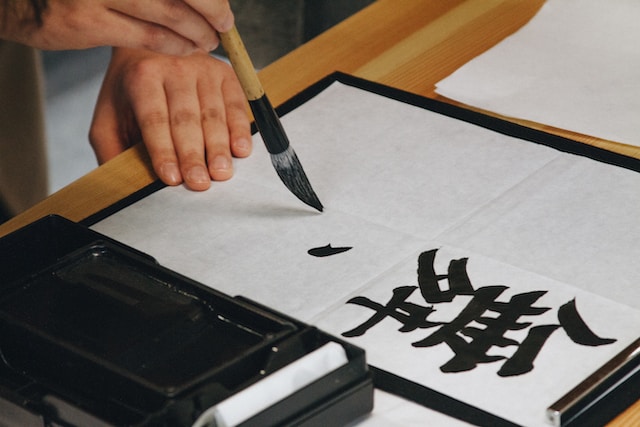
Calligraphy as an art form today
While calligraphy has been a part of Japanese culture for centuries, it continues to thrive as an art form today. Japanese calligraphy artists are highly regarded for their skill and creativity, and many continue to innovate and push the boundaries of this traditional art form. Some notable contemporary calligraphers include Yoko Shimizu, Hiroyuki Nakamura, and Shoko Kanazawa, whose works have been exhibited both nationally and internationally.
Modern design and topography
Calligraphy is also increasingly being used in modern design and typography. Its intrinsic beauty and elegance make it a popular choice for logos, advertisements, and other forms of visual communication. With the rise of digital art tools, calligraphers are now able to create works that blur the line between traditional and contemporary art, merging the old with the new.
Calligraphy events
In addition, calligraphy exhibitions, events, and competitions are held regularly throughout Japan and around the world. These events showcase the work of talented calligraphers, as well as provide a platform for emerging artists to showcase their skills and gain exposure.
A timeless form of art
Calligraphy is a testament to the elegance and refinement that defines Japanese culture. It is a true celebration of the beauty that can be found in even the simplest of things, and a reminder of the importance of taking the time to appreciate the finer things in life.
Japanese calligraphy is a timeless art form that continues to inspire and captivate people around the world. Its beauty lies in the combination of form, function, and artistic expression that has been refined over centuries of practice and innovation. Whether used for personal reflection or as a means of conveying a message, calligraphy remains a testament to the enduring power of human creativity and the beauty that can be found in the simplest of things.
